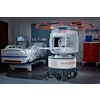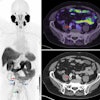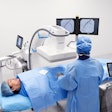
NEW YORK (Reuters Health), Aug 16 - Fujinon intelligent chromoendoscopy (FICE), an imaging technique designed to enhance the contrast of mucosal and vascular details, does not improve adenoma detection rates during colonoscopy, German researchers report.
"FICE is based on a computed spectral estimation technology that arithmetically processes reflected photons to reconstitute virtual images," according to the research team.
The trial used a single type of endoscope with FICE on or FICE off, coauthor Dr. Thomas Roesch from University Hospital Hamburg-Eppendorf, Hamburg, told Reuters Health by e-mail.
FICE did not improve adenoma detection compared to white light imaging, "perhaps because the instrument per se is already very good," Dr. Roesch said.
In a randomized trial, he and his colleagues had very experienced colonoscopists perform colonoscopy with FICE (658 patients) or white light (660 patients) in both hospital and private practice settings.
Overall, colonoscopy detected 367 adenomas and 248 hyperplastic polyps, they report in the July 6 online issue of the American Journal of Gastroenterology.
There were no differences between the two techniques in adenoma detection rate overall or when stratified by size, form, or location.
In the FICE group, examiners switched from FICE to white light imaging a mean of 4.46 times per colonoscopy, mainly because of insufficient visualization (31.2% of switches), therapy (28.0% of all switches), performing biopsies (16.7% of all switches), and confirmation of the presence or absence of lesions with white light imaging (12.8% of all switches).
"Costs for the new Fujinon system are probably higher, but procedure duration will most likely not be influenced (after a learning or accommodation period of some 10-20 examinations)," Dr. Roesch said.
"We are now performing a randomized study comparing two different endoscope generations (latest technology with instruments of one generation before) in cooperation with Pentax," he said. "This study may answer the relevant question whether you detect more adenomas if you buy a new instrument (i.e., a new generation instrument)."
Despite the lack of difference in adenoma detection rate, the researchers believe FICE could still have a twofold benefit. "First, it could be helpful for trainees and less experienced endoscopists by virtue of improved discrimination of structures." In the current study, each of the endoscopists had performed a mean of at least 10,000 colonoscopies.
Second, "FICE could be used to provide a differential diagnosis of colonic polyps as shown in a recent study, which would potentially save biopsy or polypectomy time."
Fujinon Company provided the FICE colonoscopies for the study, but did not provide further financial support.
By Will Boggs, MD
Source: link.reuters.com/huc94n
Am J Gastroenterol 2010.
Last Updated: 2010-08-13 14:48:26 -0400 (Reuters Health)
Related Reading
Computed virtual chromoendoscopy identifies neoplastic colorectal lesions, April 2, 2008
Copyright © 2010 Reuters Limited. All rights reserved. Republication or redistribution of Reuters content, including by framing or similar means, is expressly prohibited without the prior written consent of Reuters. Reuters shall not be liable for any errors or delays in the content, or for any actions taken in reliance thereon. Reuters and the Reuters sphere logo are registered trademarks and trademarks of the Reuters group of companies around the world.

















